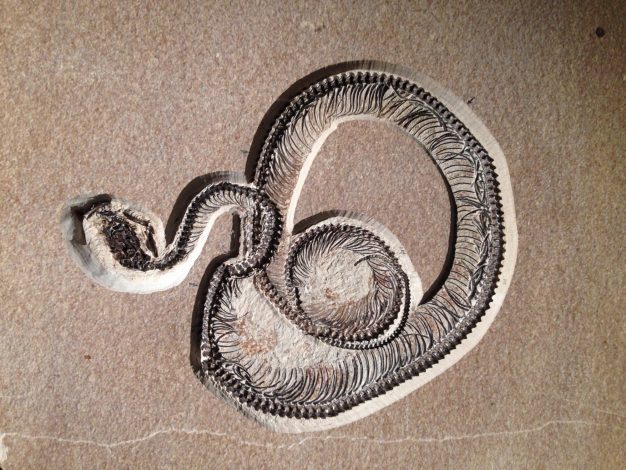Fossils explain how species adapted to prehistoric changes in ecosystems

Image: Texas A&M AgriLife
In today’s rapidly changing world, successful conservation programs will need to look at fossils to effectively foster adaptive capacity in both historical and novel ecosystems, according to a Texas A&M AgriLife Research scientist.
Michelle Lawing, assistant professor in the Department of Ecosystem Science and Management, College of Agriculture and Life Sciences, was one of 41 experts covering this topic in their research article, “Merging paleobiology with conservation biology to guide the future of terrestrial ecosystems,” in the Feb. 10 issue of the journal Science.
“We use fossils to tell us how species responded to ancient climate change,” Lawing said. “There are many climate fluctuations in the past we can study to help us understand how species and communities coped with these changes. That past response helps us understand whether or not the measured modern response to environmental change is within the realm of normal or if it is greater than expected. For example, based on the fossil record, we know that communities typically reorganize after major environmental events, including extinction.”
Lawing specializes in climate change biology, paleobiogeography and morphometrics. She explained she uses methods and models from modern ecology and evolutionary biology combined with evidence from the fossil record to create a better understanding of how species and communities respond to environmental change through time.
Her data show how ecometrics might be used to monitor and measure ecosystem change through time, explaining that body proportions and proportions of certain bones are linked to land cover, land use and topography through locomotor performance.
An ecometric is a measurement used to characterize change across space and through time, from dozens of years to millions of years.
Lawing said in carnivoran communities, locomotor diversity can be measured by examining the limbs and ankles of the animals, which is known to be linked to vegetation cover. With snakes, the same relationship can be measured with the ratio of tail to body length.
Changes in these traits can be assessed for compatibility with changes in community composition and land cover, she said. For example, when land acquired by the University of Kansas was converted from agricultural grassland to forest between 1947 and 2006, turnover in the reptile life changed the overall community measurement of tail-to-body length. This change was also seen in grassland and forest ecosystems elsewhere.
Community snake tails, on average, are longer in forested areas because many snakes in the forest community have prehensile tails, meaning they use their tails like an appendage to grab branches to help stabilize their movement through the canopy.
Conversely, 19th-century deforestation of Indiana completely destroyed many large mammalian carnivores, resulting in a loss of locomotor diversity. She said this loss of locomotor diversity can be mapped to identify other regions that may have been similarly affected.
“As a group, we concluded that rapid global change means conservation biology has to be done differently going forward,” she said. “The fossil record has to be a critical part in guiding our efforts to conserve nature into the future.”
As a result of this study, Lawing said conservation biologists and paleobiologists are working together to develop new conservation paradigms for both historical and novel ecosystems.

